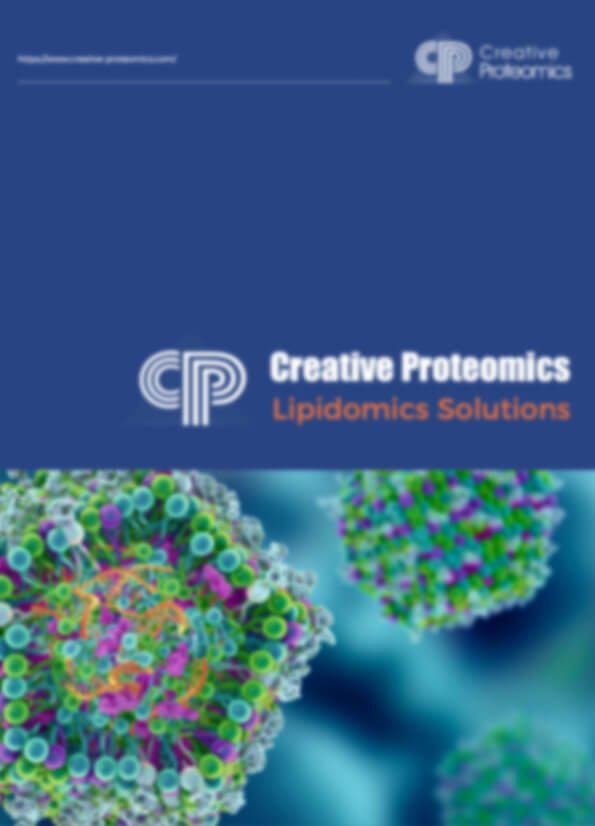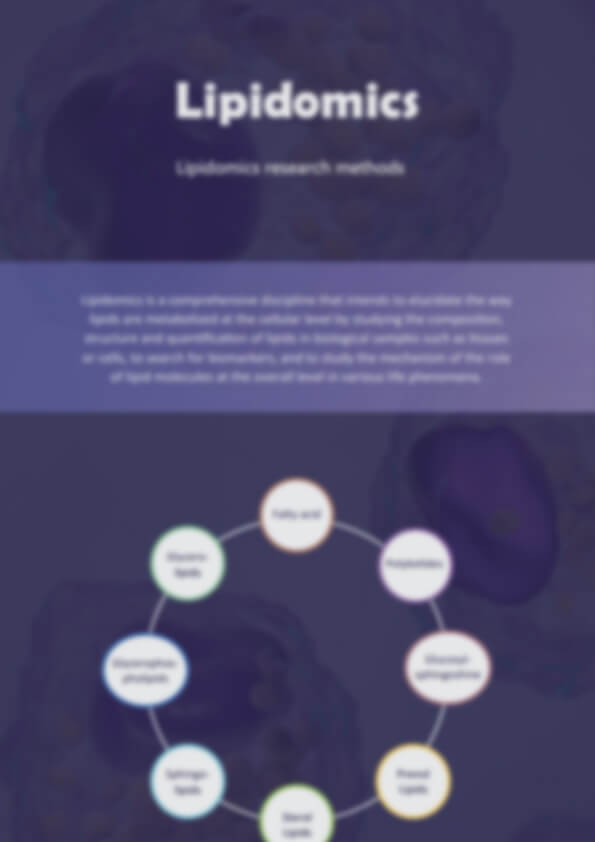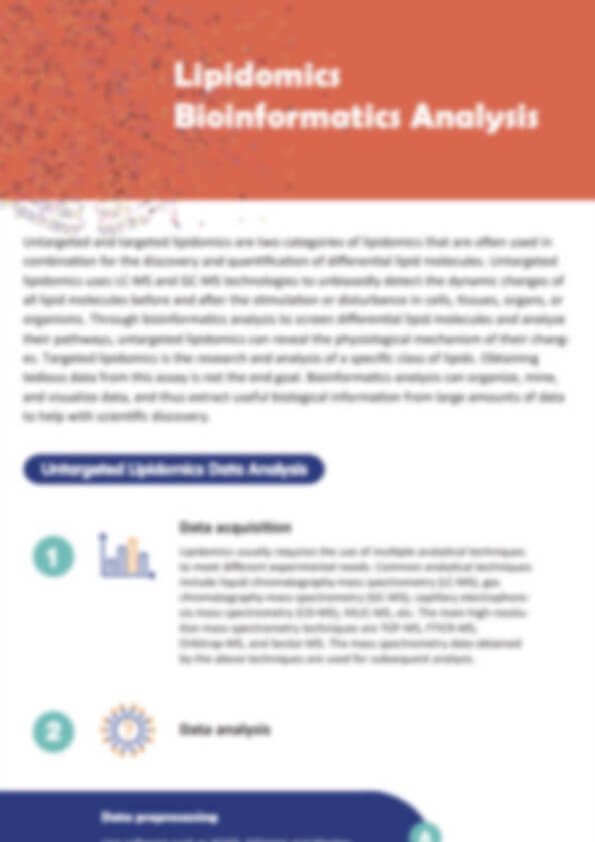Olive Oil Phenols Analysis Service
Creative Proteomics provides targeted phenolic profiling, total phenolic content (TPC) quantification, and antioxidant capacity evaluation for olive oil, addressing challenges in authenticity verification (detecting adulteration), health claim validation, and shelf-life prediction (oxidative stability). Our services empower producers to ensure quality compliance, optimize processing, and differentiate premium products.
Submit Your Request Now
×- What We Provide
- List of Phenols
- Technology Platform
- Advantages
- Sample Requirements
- Demo
- FAQs
- Publications
What are Olive Oil Phenols?
Olive oil phenols are a group of bioactive compounds primarily derived from the olive fruit (Olea europaea). These compounds, including hydroxytyrosol, tyrosol, oleuropein, and ligstroside, are renowned for their antioxidant, anti-inflammatory, and cardioprotective properties. Phenolic content is a critical quality marker for olive oil, directly influencing its sensory attributes (bitterness, pungency) and health benefits. At Creative Proteomics, we focus on quantifying these compounds to validate oil authenticity and nutritional value.
What Specific Projects Does Creative Proteomics Offer?
Targeted Phenolic Profiling: Precise quantification of individual phenolic compounds, including hydroxytyrosol, tyrosol, oleocanthal, vanillic acid, apigenin, and luteolin.
Total Phenolic Content (TPC) Analysis: Measurement of total phenolic compounds using advanced spectrophotometric (Folin-Ciocalteu) or chromatographic (HPLC-UV) techniques.
Antioxidant Capacity Evaluation: Determination of free radical scavenging activity via DPPH and ORAC assays to assess olive oil's oxidative stability and health benefits.
Sensory and Stability Testing: Expert-led sensory evaluation of bitterness, pungency, and flavor profiles, combined with oxidative stability testing under controlled conditions.
Custom Method Development: Design and validation of tailored analytical protocols for novel or rare phenolic compounds, complex matrices, or specialized research needs.
Batch-to-Batch Consistency Monitoring: Quality control services to ensure uniformity in phenolic composition across olive oil production batches.
Authenticity Verification: Identification of adulteration or dilution by analyzing phenolic markers unique to high-quality extra virgin olive oil.
Shelf-Life Prediction: Accelerated aging studies and phenolic degradation analysis to estimate product stability over time.
List of Phenols We Can Analyze
| Phenolic Compound | Chemical Class | Detection Limit (ppm) |
|---|---|---|
| Hydroxytyrosol | Secoiridoid derivative | 0.2 |
| Tyrosol | Phenolic alcohol | 0.3 |
| Oleuropein | Secoiridoid glycoside | 0.5 |
| Vanillic Acid | Phenolic acid | 0.1 |
| Apigenin | Flavonoid | 0.4 |
| Luteolin | Flavonoid | 0.3 |
| Oleocanthal | Secoiridoid aldehyde | 0.2 |
Methods for Phenols Detection
Liquid Chromatography-Mass Spectrometry (LC-MS/MS)
Instrument: Thermo Scientific™ Vanquish Horizon UHPLC coupled with Q Exactive™ HF-X Hybrid Quadrupole-Orbitrap.
Parameters:
- Column: Accucore™ C18 (2.6 µm, 150 × 2.1 mm).
- Mobile Phase: 0.1% formic acid in water/acetonitrile gradient.
- Resolution: 240,000 (Full Scan MS).
Gas Chromatography-Flame Ionization Detection (GC-FID)
- Instrument: Agilent 8890 GC with FID.
- Applications: Volatile phenol derivatives (e.g., tyrosol esters).
Nuclear Magnetic Resonance (NMR) Spectroscopy
- Instrument: Bruker Avance III HD 600 MHz.
- Use Case: Structural elucidation of oleocanthal and oleuropein aglycones.

Q Exactive™ HF-X Hybrid Quadrupole-Orbitrap™ Mass Spectrometer (Figure from Thermo Fisher)

Agilent 8890 GC with FID (Figure from Agilent)

Vanquish™ Horizon UHPLC System (Figure from Thermo Fisher)
Advantages of Our Phenols Detection
- Ultra-Sensitive Quantification-Detect phenols at trace levels (down to 0.1 ppm) using HPLC-MS/MS and UPLC-PDA for unmatched precision.
- Comprehensive Coverage-Analyze over 20 phenolic compounds, including hydroxytyrosol, oleocanthal, and luteolin, with customizable panels for rare biomarkers.
- Health Benefit Correlation-Link phenolic profiles to antioxidant, anti-inflammatory, and neuroprotective properties, validated by clinical studies.
- Rapid Turnaround-Deliver results within 7–14 business days via automated workflows and parallel sample processing.
- Adulteration Detection-Identify non-olive oil blends by monitoring unique phenolic markers (e.g., p-coumaric acid ratios).
- Custom Solutions-Develop tailored methods for novel phenols or complex matrices (e.g., infused oils, aged products).
Sample Requirements for Olive Oil Phenols Analysis
| Sample Type | Recommended Volume | Additional Notes |
|---|---|---|
| Extra Virgin Olive Oil | Minimum 10 mL | Freshly pressed olive oils, ideal for phenolic analysis due to their high content of bioactive compounds. Store in amber glass bottles to protect from light degradation. |
| Virgin Olive Oil | Minimum 10 mL | Similar to extra virgin, but may have a slightly lower phenolic concentration. Ensure samples are properly sealed and labeled with harvest date and oil variety. |
| Refined Olive Oil | Minimum 10 mL | Refined oils may contain fewer phenolic compounds due to the refinement process, but still valuable for analysis. Ensure samples are well-protected from light and air exposure. |
| Olive Oil Blends | Minimum 10 mL | For oils composed of both virgin and refined oils. The phenolic profile can vary depending on the proportions of each type. Label the blend ratio for accurate analysis. |
| Olive Oil from Different Varieties | Minimum 10 mL | Different olive varieties have varying phenolic content. It's important to note the variety to help in identifying specific phenolic profiles. |
| Olive Oil Samples from Different Regions | Minimum 10 mL | Geographic origin significantly influences phenolic content. Provide details on the origin (e.g., region, country) for accurate comparative analysis. |
Applications of Olive Oil Phenols
Quality Assurance
Verify olive oil authenticity and detect adulteration by analyzing unique phenolic markers (e.g., hydroxytyrosol, oleocanthal) to ensure compliance with purity standards.
Mechanistic Health Studies
Investigate neuroprotective (e.g., amyloid-beta inhibition by hydroxytyrosol) and anti-inflammatory mechanisms (e.g., NF-κB suppression by oleuropein) using in vitro and animal models.
Oxidative Stress Research
Quantify phenol-mediated ROS scavenging and mitochondrial protection in cellular assays to explore antioxidant pathways.
Demo Result of Targeted Metabolomics Service
Figures come from (Li, Y.et.al, Sci Rep,2023)
FAQ of Olive Oil Phenols Analysis
Can phenolic analysis detect olive oil adulteration?
Yes. Abnormal ratios of specific phenols (e.g., p-coumaric acid) or the presence of foreign markers (e.g., sunflower oil sterols) can reveal adulteration.
How does olive cultivar affect phenolic content?
Phenol profiles vary significantly by cultivar. For example, Picual and Arbequina oils differ in oleuropein and volatile compound levels. Crossbred varieties like Sikitita show hybrid phenolic traits, influenced by ripeness and processing.
How does phenolic content relate to olive oil shelf life?
Phenols like oleuropein and ligstroside aglycone delay oxidation. Degradation kinetics studies show phenol stability decreases by ~40% after 6 months at 25°C, informing optimal storage conditions.
Does cooking degrade olive oil phenols?
Heating at 120–170°C minimally affects total phenols. For example, hydroxytyrosol levels remain stable in short-term cooking, preserving health benefits
Learn about other Q&A.
Phenols Analysis Case Study
Publications
Here are some publications in Lipidomics research from our clients:

- Glucosylceramide is essential for Heartland and Dabie bandavirus glycoprotein-induced membrane fusion. 2023. https://doi.org/10.1371/journal.ppat.1011232
- Laboratory evaluation of larvicidal and oviposition deterrent properties of edible plant oils for potential management of Aedes aegypti (Diptera: Culicidae) in drinking water containers. 2019. https://doi.org/10.1093/jme/tjz021
- Lipid Membrane Engineering for Biotechnology (Doctoral dissertation, Aston University). 2023. https://doi.org/10.48780/publications.aston.ac.uk.00046663
- Evidence for phosphate-dependent control of symbiont cell division in the model anemone Exaiptasia diaphana. 2024. https://doi.org/10.1128/mbio.01059-24
- Prospective randomized, double-blind, placebo-controlled study of a standardized oral pomegranate extract on the gut microbiome and short-chain fatty acids. 2023. https://doi.org/10.3390/foods13010015















